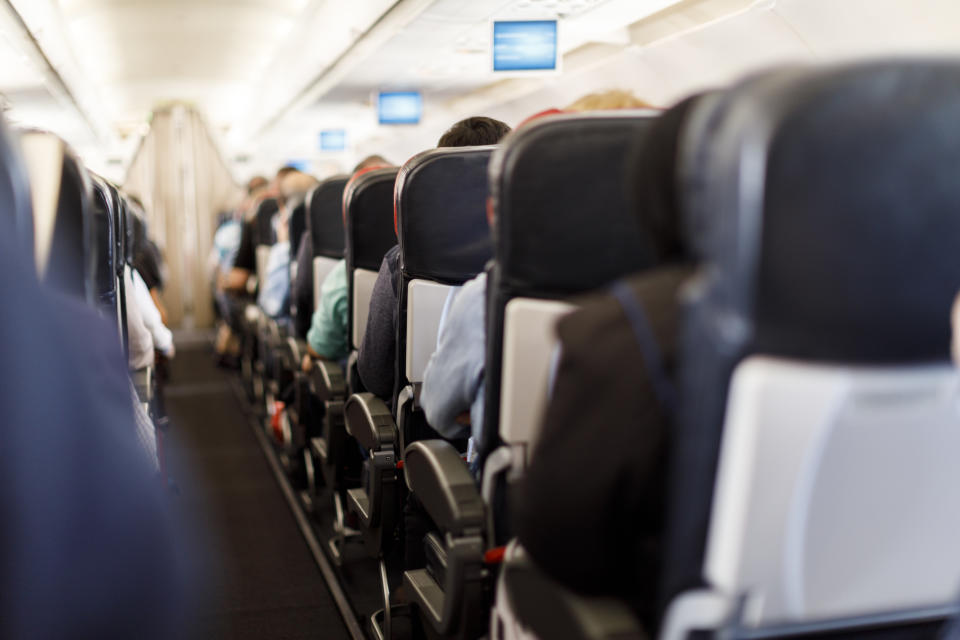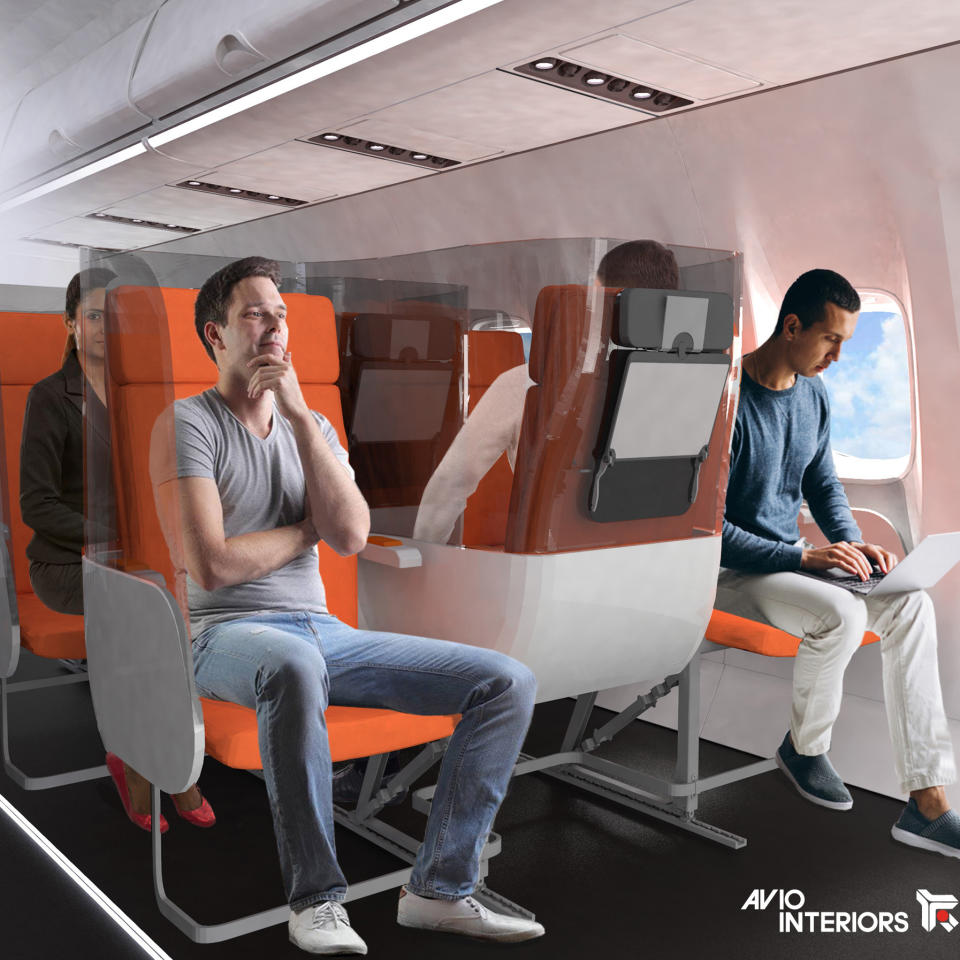This could be the future of economy flying post pandemic
As airlines look for ways to survive during the current coronavirus pandemic, you might have found yourself wondering what flying is going to look like once travel is back up and running.
Qantas, for example, has already moved to ensure middle seats on aircraft are left vacant for now, ensuring travellers are kept apart on flights.
Now, Italian-based design firm Aviointeriors has come up with two economy cabin concepts, which could give us a glimpse at the future of flying post-pandemic.

Gone could be the tight rows of three or four we all love to hate when flying in economy. Instead we could be looking at a more spaced out design that includes protective screens between passengers, and potentially rear-facing seats.
The ‘Janus’ design by Aviointeriors - named after the god of Ancient Rome - has the middle seat in the reverse position to ensure “maximum isolation”.
“While passengers seated on the side seats, aisle and fuselage, continue to be positioned in the flight direction as usual, the passenger sitting in the centre is facing backwards,” the company’s website explained.
“This arrangement allows all three passengers to be separated with a shield made of transparent material that isolates them from each other, creating a protective barrier for everyone, even from people who walk through the aisle.
“Each place of the ‘Janus’ seat is surrounded on three sides by a high shield that prevents the breath propagation to occupants of adjacent seats.”

The second design is called ‘Glassafe’, which can be installed on existing seats.
“‘Glassafe’ is made of transparent material... creating an isolated volume around the passenger in order to avoid or minimise contacts and interactions via air between passenger and passenger, so as to reduce the probability of contamination by viruses or other,” the company said.
“It is supplied in various executions with fixing systems to the seat that allow easy installation and removal.”

Travellers were quick to share their thoughts on the designs after the company shared the concepts on social media.
“This concept looks interesting. Then the person sitting in the middle has something to lean on,” one person said.
“More leg room is a plus. More like 1st class,” another thought.
Some, however, weren’t convinced it would work.
“It does not matter how much of a gap you have. At the end of the day you all breath the same recirculated air for the entire journey,” was one person’s response.
“It's too awkward to clean during turnarounds and serve food during the flight, which will make it more expensive overall for airlines,” another pointed out.
Qantas ditches middle seat
Qantas and Virgin Australia have ramped up their commitment to social distancing by implementing new measures for passengers amid the coronavirus pandemic.
The moves that involve limiting flight capacity come after a damning image of a domestic Qantas flight was shared on social media last week where all seats were occupied on the route between Townsville and Brisbane, appearing to ignore current social distancing measures.
Qantas has now moved to ensure all middle seats on aircrafts will be left vacant, ensuring travellers are kept apart on flights.
“While the risk of contracting coronavirus on board an aircraft is regarded as low, social distancing has been put in place across all flights,” Qantas stated.
A spokesperson told Yahoo News Australia there has been no transmission of the virus on flights so far.
“It’s important to note that there has been no known case of people contracting coronavirus on board an aircraft, anywhere in the world,” they said.

Cabin crew introduce new ‘uniform’
While the uniform’s of cabin crew are normally something of a fashion statement, things could look a little different for those lucky enough to still be working.
Emirates has announced all cabin crew, boarding agents and ground staff in direct contact with passengers will now don personal protective equipment (PPE) which includes a protective disposable gown over their uniforms, and a safety visor, in addition to masks and gloves.
On board Emirates' flights, seats are are also pre-allocated with vacant seats placed between individual passengers or family groups in observance of physical distancing protocols.

How to protect yourself from a virus on a plane
Researchers at Emory University in Atlanta, Georgia found those who were seated in the window in general had less interaction with other passengers – beyond those sitting within two rows of them – which limited their chances of interacting with an infected person, researchers said.
Where's the safest seat on a plane to avoid catching #coronavirus? @EmoryUniversity and @GeorgiaTech researchers actually studied this and have an answer, applicable to flu, colds, and other infectious diseases. @MailOnline https://t.co/6owKVyLSvj #2019nCoV #wuhan pic.twitter.com/30GAym3zPW
— Emory Health (@emoryhealthsci) January 29, 2020
Experts have stressed the coronavirus isn’t something that is spread through the air [it is spread via contaminated droplets spread by coughing or sneezing, that come into contact with hands, surfaces or objects].
The medical advisor of the International Air Transport Association, David Powell, stressed cabin air was purified with surgical-grade filters and as such the risk of catching a serious viral infection on a plane is ‘low’.
“The air supply to a modern airliner is very different from a cinema or an office building,” he told Bloomberg.
“The air is a combination of fresh air and recirculated air, about half each. The recirculated air goes through filters of the exact same type that we use in surgical operating theatres.
“That supplied air is guaranteed to be 99.97 per cent — or better — free of viruses and other particles. So the risk, if there is one, does not come from the supplied air. It comes from other people.”
Got a story tip or just want to get in touch? Email us at lifestyle.tips@verizonmedia.com.

 Yahoo Lifestyle
Yahoo Lifestyle 



